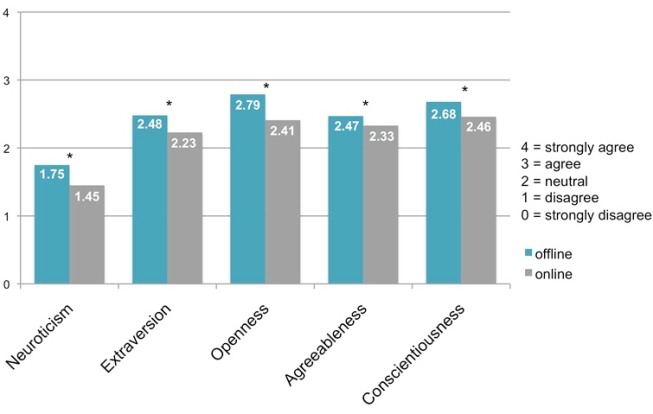Sep 01, 2004 Abstract. The lexically based Five-Factor Personality Inventory (FFPI) was correlated with the factors and facets of the Revised NEO Personality Inventory (NEO-PI-R) in Belgian (N = 265), American (N = 116), and Hungarian (N = 320) samples. Results were similar across the three cultures. Manual; thus, FFM-derived objective inventories such as the NEO PI-R are especially well-suited for the psychological screening of peace officers. The NEO Personality Inventory (NEO-PI), first published in 1985, was an adaptation of an earlier three-factor inventory (Costa & McCrae, 1985). The initial three-factor inventory included the domain.
from wikipedia The internal consistency of the NEO scales was assessed on 1,539 individuals (McCrae & Costa,2010). The internal consistency of the NEO PI-R was high, at: N = .92, E = .89, O = .87, A = .86, C = .90. The internal consistency of the facet scales ranged from .56 to .81. The internal consistency of the NEO PI-3 was consistent with that of the NEO PI-R, with α ranging from .89 to .93 for the five domains. Internal consistency coefficient from the facets, with each facet scale comprising fewer items than each of the Big Five scales, were necessarily smaller, ranging from .54 to .83 (McCrae & Costa,2010).


The NEO has been translated into many languages. The internal consistency coefficients of the domain scores of a translation of the NEO that has been used in the Philippines are satisfactory. The alphas for the domain scores range from .78 to .90 (Church & Katigbak, 2002), with facet alphas having a median of .61 (Katigbak et al. 2002). Observer-ratings NEO PI-R data from 49 different cultures was used as criterion in a recent study which tested whether individuals’ perceptions of the “national character” of a culture accurately reflected the personality of the members of that culture (it did not) (Terracciano et al. 2005).
The test-retest reliability of the NEO PI-R has also been found to be satisfactory. The test-retest reliability of an early version of the NEO after 3 months was: N = .87, E = .91, O = .86 (McCrae & Costa, 1983). The test-retest reliability for over 6 years, as reported in the NEO PI-R manual, was the following: N = .83, E = .82, O = .83, A = .63, C = .79. Costa and McCrae pointed out that these findings not only demonstrate good reliability of the domain scores, but also their stability (among individuals over the age of 30). Scores measured six years apart varied only marginally more than scores measured a few months apart (Costa & McCrae, 1992).
Neo Five Factor Inventory 3
The psychometric properties of NEO PI-R scales have been found to generalize across ages, cultures, and methods of measurement(McCrae et al. 2011).
